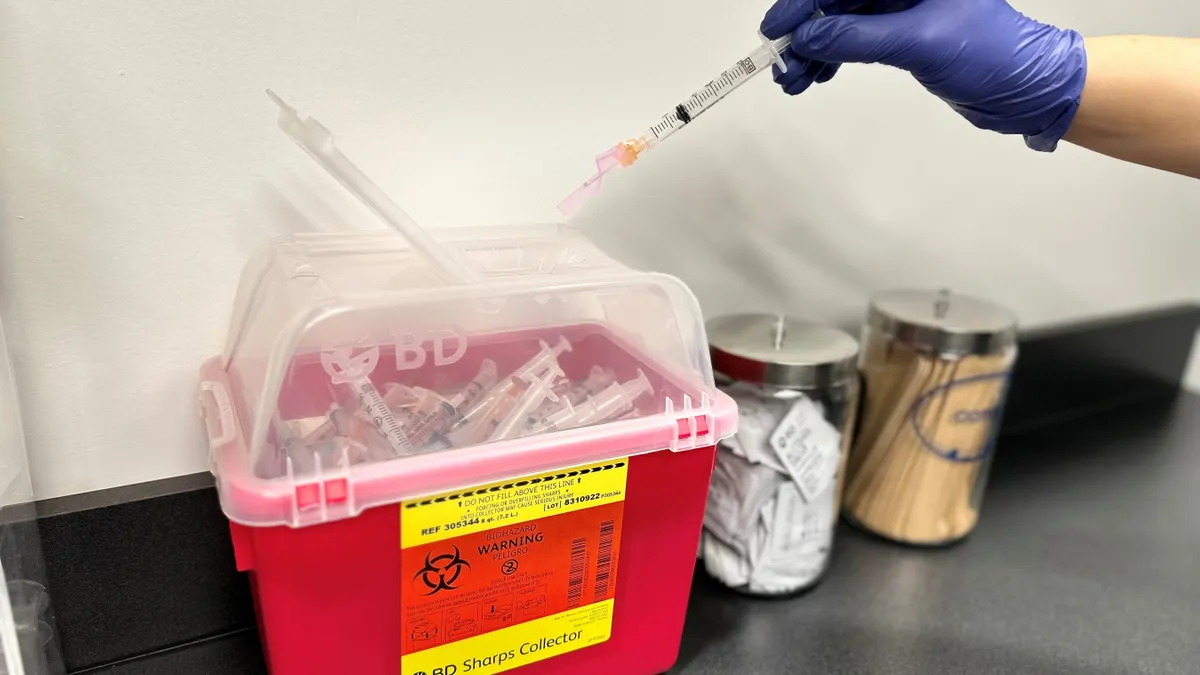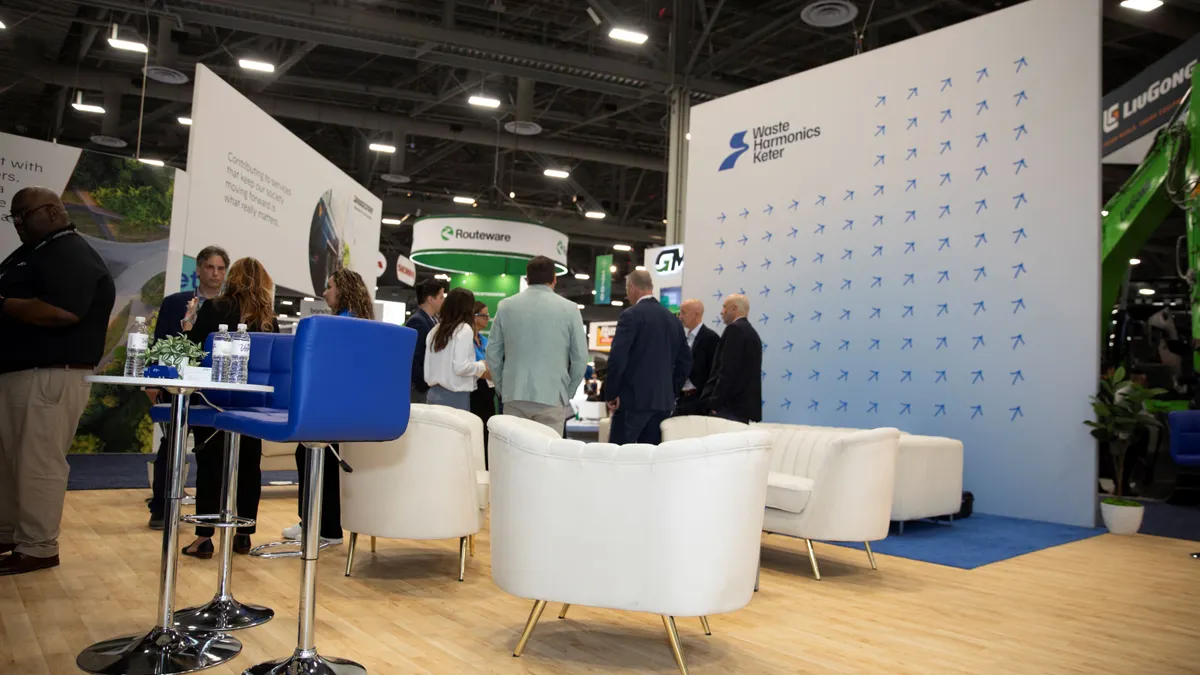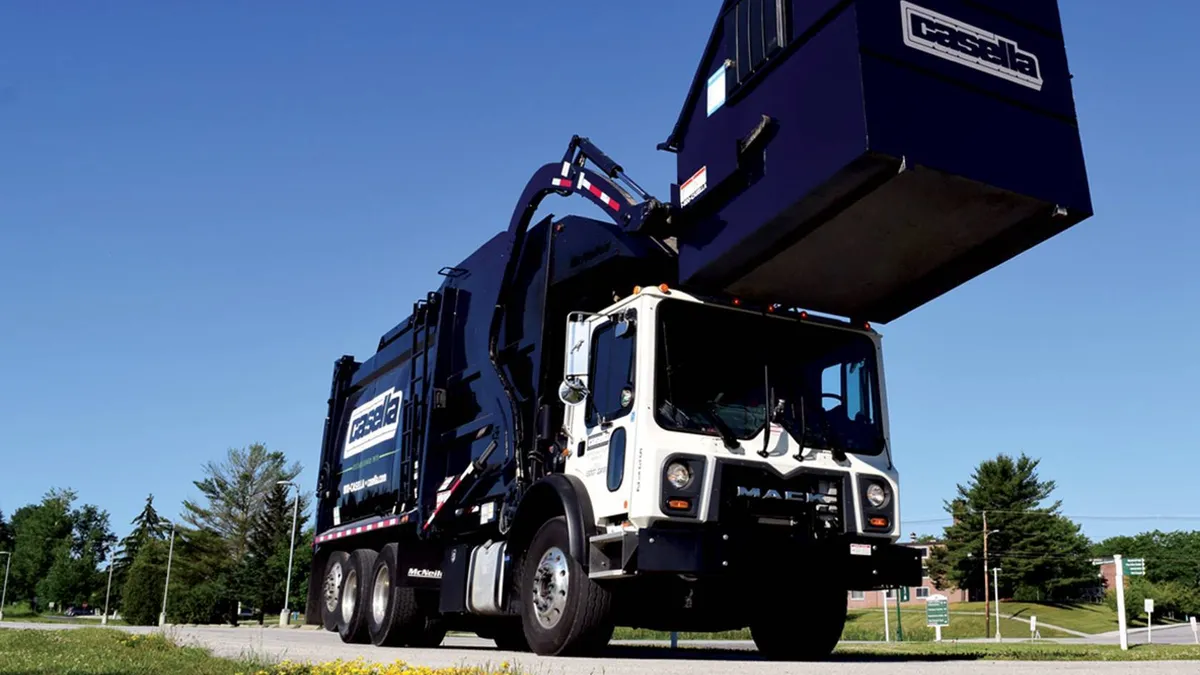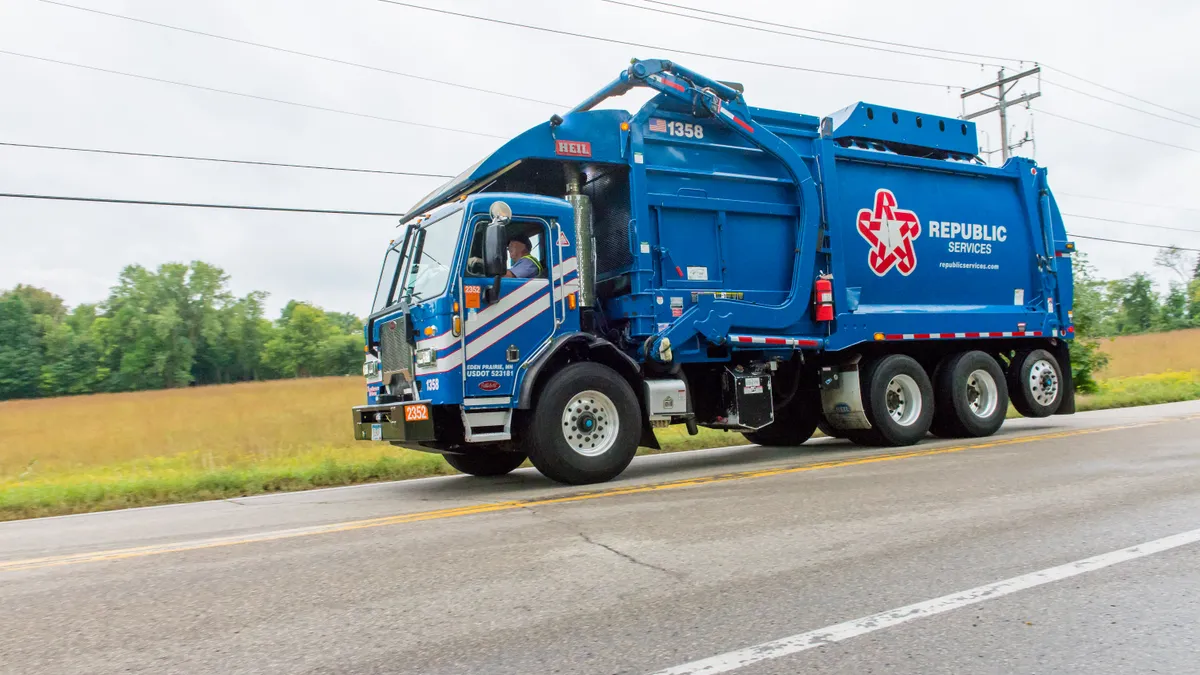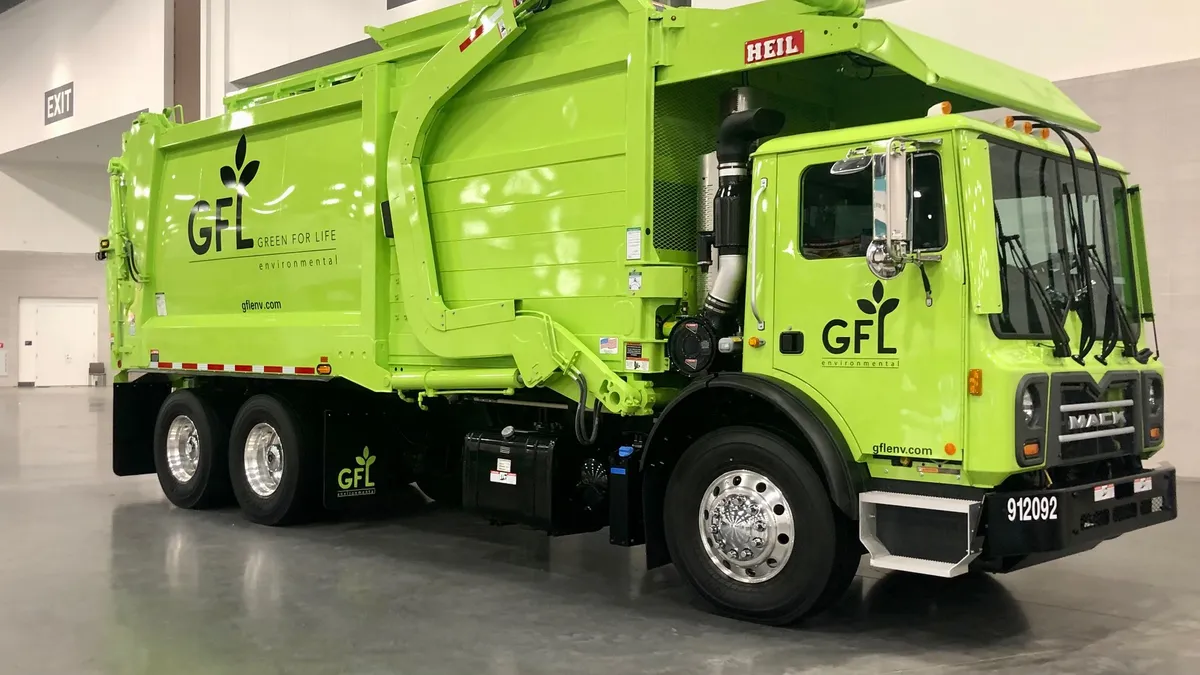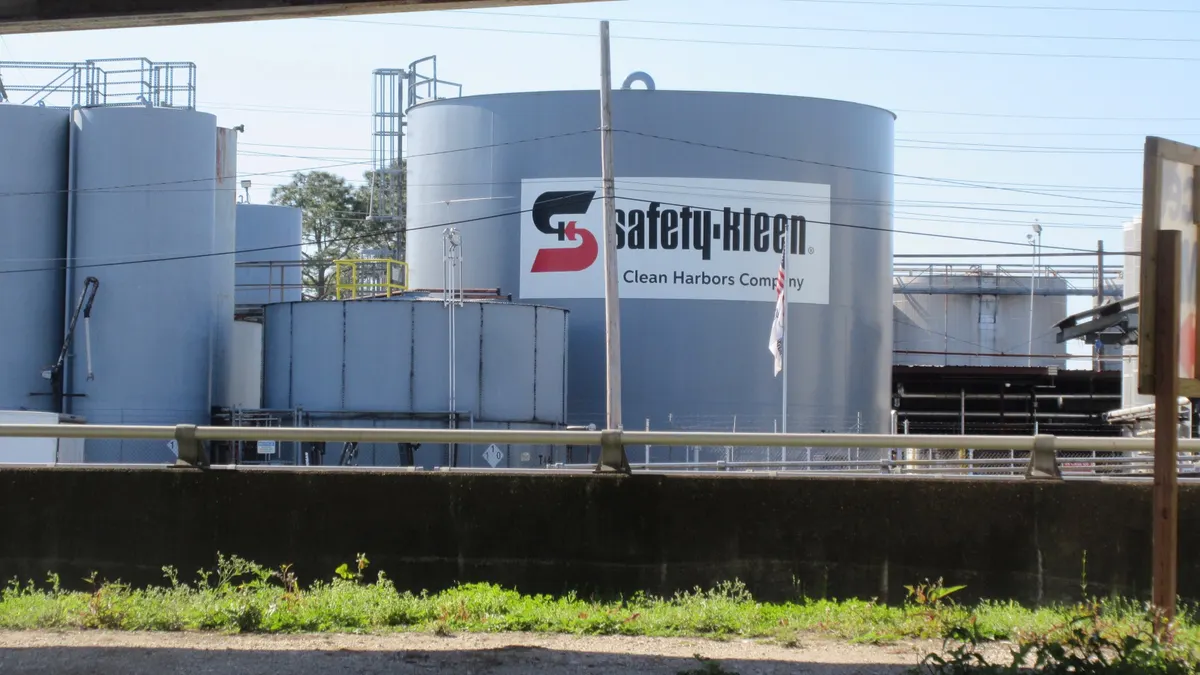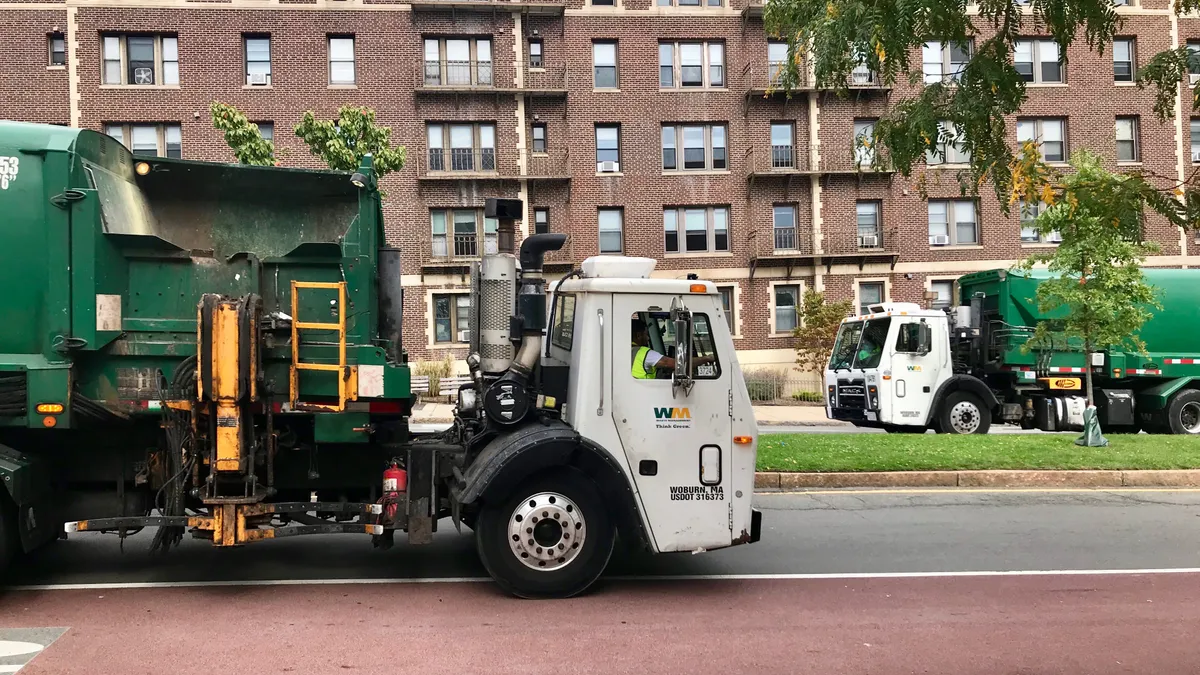Last week, Maryland Governor Larry Hogan presented a proclamation to Chaz Miller to honor the industry veteran for his 40-plus years serving the waste and recycling industry — 26 of which were spent in the D.C.-area at the National Waste & Recycling Association (NWRA).
Miller, who recently announced his retirement from his NWRA position as director of policy & advocacy, has the industry in his blood. Since he was a young adult, Miller has spent his career pushing the needle forward for recycling, regulation and source separation. His path has led him from the Environmental Protection Agency (EPA) to the Glass Packaging Institute (GPI), all the way to NWRA in 1991 (which, at the time, was dubbed the National Solid Wastes Management Association).
Though Miller still will work part-time with NWRA on extended producer responsibility (EPR) regulations, he has stepped away from full-time work, leaving big shoes for the next generation of recyclers to fill. Waste Dive caught up with Miller for an exit interview to hear more about his experiences over the last four decades, the role models who shaped his career path and his advice for incoming industry professionals.
The following interview has been edited for clarity and brevity.
WASTE DIVE: You’ve been in the industry for about 40 years, right?
MILLER: Well actually I had a summer job when I was in college [in Colorado] which included collecting all the garbage at the dude ranch I was working at and driving it on a scenic truck route ... and emptying the barrels, moving the truck away from the piles, setting it on fire and going away. It was all quite legal back then. But really I began at EPA in 1976.
So in the past 40-plus years in the industry, what’s the most notable trend or change that you’ve seen?
MILLER: Recycling is commonplace. In 1968 there were two curbside recycling programs that were newspaper only. San Francisco and Madison, WI. That was it. When I started at EPA in 1976, there were about 100 curbside programs, most of which were newspaper only. There were less than a handful of multi-material programs. And today you’ve got who knows how many curbside recycling programs. It’s a commonplace across the country. I think we’ve created a very definite cultural norm in single-family housing for recycling. I don’t believe there is yet a cultural norm for recycling as a whole in the country.
Why do you think that is?
MILLER: Because multi-family housing, public spaces are anonymous. And quite frankly, your curbside at your single-family house is not anonymous. Everybody knows your business.
"I don’t believe there is yet a cultural norm for recycling as a whole in the country."

Chaz Miller
Retired Director of Policy/Advocacy, NWRA
I know you have experience working in glass packaging. What is your prediction of how the glass recycling industry is going to look moving forward?
MILLER: It’s all going to depend on a couple of factors. Glass is a great package, it’s a low valuable recyclable. Glass is very important when you’re looking at measuring recycling programs by tonnage; it’s less important when you’re looking at measuring programs by greenhouse gas (GHG) impact. So the real question you need to ask is, will recycling programs continue to measure success on tonnage — in which case a ton is a ton is a ton and who cares what the ton is — or will they measure it on GHG impact, which is going to tilt toward certain products at the expense of others?
What role do you see the industry playing in future climate discussions, either on a local or a federal level?
MILLER: Keep in mind I’m not longer employed by NWRA on a full-time basis so these are all my own opinions. The federal government has to, once again, accept the reality of climate change. And that it is caused by human activity. So, if there’s going to be denial over that, it’s not going to happen at the federal level. Clearly when it comes to climate emissions, the waste industry is extremely small potatoes. We’re like 2.7% — something like that — of GHG emissions from collections, processing and disposal. Then if you throw in the savings from recycling it goes down even more, obviously. You get these charts from EPA and they talk about manufacturing that’s 40% of GHG emissions. Well, yeah, so what? What are we supposed to do, shut down every manufacturing plant in this country? That’d be kind of dumb. People should stop buying things? That’s not going to last very long.
"The federal government has to, once again, accept the reality of climate change."

Chaz Miller
Retired Director of Policy/Advocacy, NWRA
Have you ever touted anyone in the industry as your mentor, either when you were younger or as you’ve grown in your career?
MILLER: I had the good fortune to work for some very good people. Penny Hansen, when I started at EPA, who really laid the groundwork for recycling and source separation. Penny did wonderful, wonderful work. When I worked in the glass industry, the GPI people were wonderful — Chip Andrews and Sylvia Swanson. And then at NSWMA, Bruce Parker and Sheila Prindiville were excellent. So many really good people in the industry. I had the really good fortune with working at NWRA with people and companies throughout America and the great thing about this industry is the members are very straight spoken, they don’t beat around the bush, but they’re also very good about sharing. They’re very good about pointing out what works and what doesn’t. It’s not a perfect industry, no industry is perfect. You just learn from people as you go along and you pick up things as you go along.
Is there an organization or a person that you’re most excited to see grow as an emerging industry leader?
MILLER: The Recycling Partnership and Keefe [Harrison].
What advice do you have for young people who are just entering this industry?
MILLER: I think the first thing is to be skeptical. Just because, for instance, a state sets a 75% recycling goal — ask why. Ask, what was the basis for the number? Ask if they’ve spent any time whatsoever figuring out if that was achievable before they passed the law. If a product says it has a 60% recycling rate, find out what the basis of that number is. There’s a lot of BS in solid waste and recycling. There’s a lot of people who substitute hopes for facts, and a lot of people, I think, have made the unfortunate mistake of saying this is all easier than it really is. Recycling is a very profound change in human behavior. We had to change human behavior to get people to put the trash out at the curbside, but that was a comparatively simple change — instead of throwing it out the window, you put it in a can and put it on the curb. Getting people to separate things beyond one container is more challenging. And getting people to do it right every time is even more challenging.
"There’s a lot of people who substitute hopes for facts, and a lot of people, I think, have made the unfortunate mistake of saying this is all easier than it really is."

Chaz Miller
Retired Director of Policy/Advocacy, NWRA
What you sort of have is an interesting trend; the more ambitious recycling goals become, and the more materials we start collecting to recycle, the easier it is to screw things up. The easier it is for people to do wishful recycling, the easier it is for people to, when in doubt, throw it in when they should be doing the opposite. I think one of the ironies with some of these very aggressive, aspirational recycling goals is that they may have caused more problems than they’ve solved.







